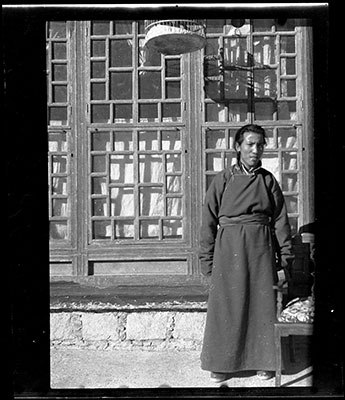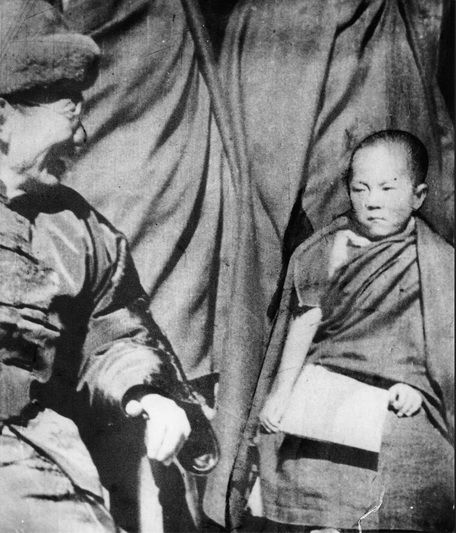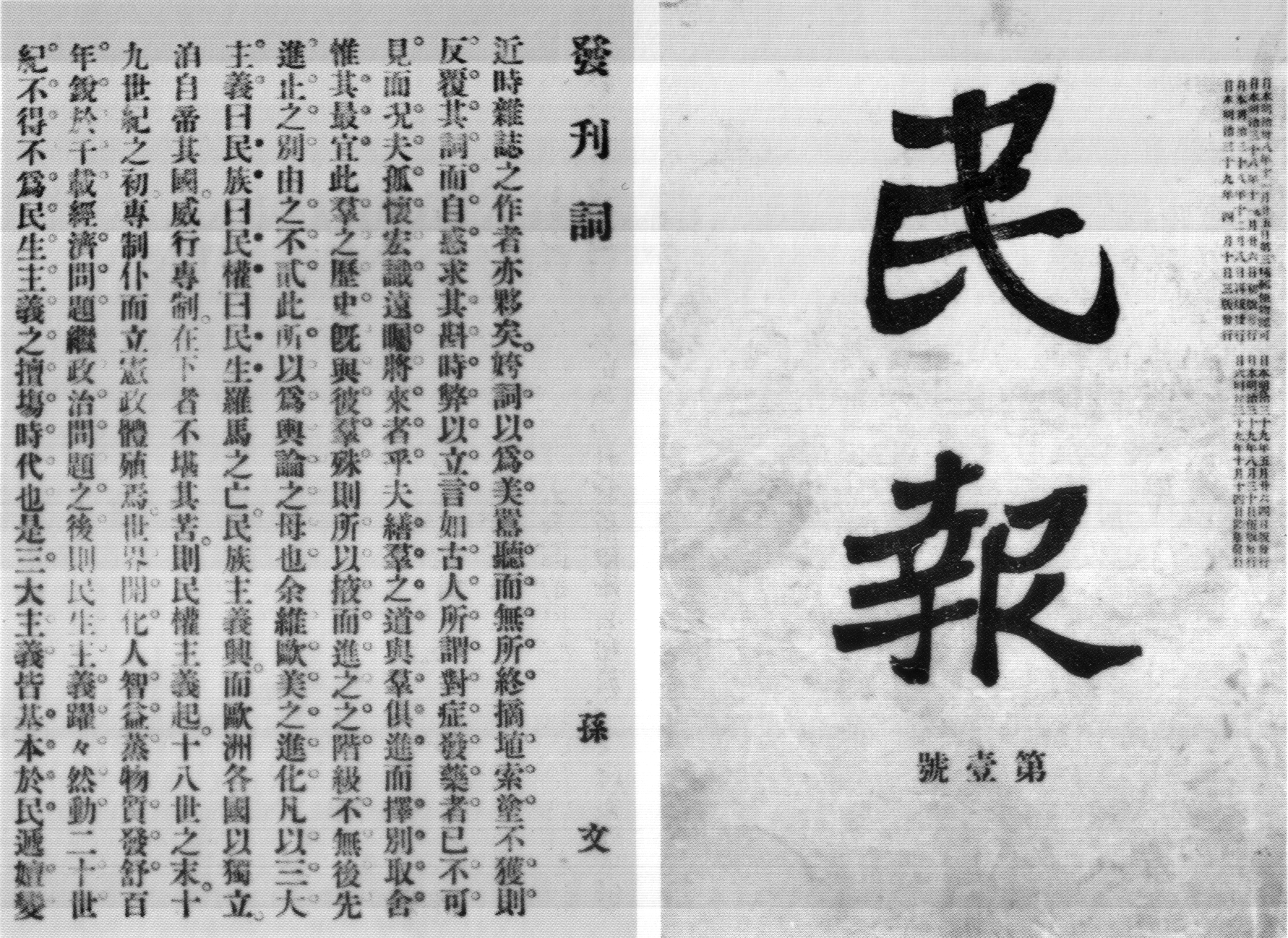|
Pandatsang Rapga
Pandatsang Rapga (; 1902–1974) was a Khampa revolutionary during the first half of the 20th century in Tibet. He was pro-Kuomintang and pro-Republic of China, anti-feudal, anti-communist. He believed in overthrowing the Dalai Lama's feudal regime and driving British imperialism out of Tibet, and acted on behalf of Chiang Kai-shek in countering the Dalai Lama. He was later involved in rebelling against communist rule. Background He belonged to a branch of the large Pandatsang clan, who hailed from Kham. Pandatsang means "House of Pangda" in Kham. The Pandatsang were an extremely rich Khampa trading family with enormous influence in Kham. The family leader was Nyigyal. The family's servants were known to often boast "Sa spang mda' gnam spang mda'", meaning "The earth is Pangda's, the sky is Pangda's", and "I am connected to Pangda, what are you going to do to me?" They were behind the rebellion against Lhasa in 1934 and the Tibet Improvement Party. Rapga was the brother of Pand ... [...More Info...] [...Related Items...] OR: [Wikipedia] [Google] [Baidu] |
Mongolian And Tibetan Affairs Commission
The Mongolian and Tibetan Affairs Commission (MTAC) was a ministry-level commission of the Executive Yuan in the Republic of China. It was disbanded on 15 September 2017. History The first model was created during the Qing dynasty in 1636 as the Mongolian Bureau (; mnc, , z=Monggo jurgan), later reformed into the Lifan Yuan (理藩院) in 1639, and oversaw the relationship of the Qing court to its " Feudatory Regions" ( Mongolian, Muslims in Xinjiang and Tibetan territories). In 1906, during the reign of the Guangxu Emperor, it was renamed to Ministry of Minority Affairs (理藩部). Following the Xinhai Revolution and the collapse of the Qing dynasty, the section was replaced by Mongolian and Tibetan Affairs Agency under the Ministry of the Interior in April 1912. In July 1912, the agency was again renamed as Bureau of Mongolian and Tibetan Affairs (蒙藏院) and placed under the State Affairs Yuan. In 1914, it was reorganized and being placed directly under the supe ... [...More Info...] [...Related Items...] OR: [Wikipedia] [Google] [Baidu] |
Gyalo Thondup
Gyalo Thondup (; ; – 8 February 2025) was a Tibetan political operator in exile. The second-oldest brother of the 14th Dalai Lama, he was his closest advisor. From 1952 onward, he was based in India. Through the 1950s and 1960s, he worked with the Central Intelligence Agency of the United States during its unsuccessful campaign to use armed Tibetan rebels against China. Thondup helped to negotiate the Dalai Lama's safe passage to India following his escape from Lhasa in 1959. After US support of the Tibetan resistance ended in the 1970s, he often acted as the Dalai Lama's unofficial envoy to China and attempted to negotiate his return. His bestselling memoir, ''The Noodle Maker of Kalimpong: The Untold Story of My Struggle for Tibet'', was published in 2015. Following his death in 2025, ''The Washington Post'' said Thondup was "arguably the second-most important figure in modern Tibetan history", viewed by many governments around the world as a de facto political leader ... [...More Info...] [...Related Items...] OR: [Wikipedia] [Google] [Baidu] |
Battle Of Chamdo
The Battle of Chamdo (or Qamdo; ) occurred from 6 to 24 October 1950. It was a military campaign by the People's Republic of China (PRC) to take the Chamdo Region from a ''de facto'' independent Tibetan state.Shakya 1999 pp. 28–32. The campaign resulted in the capture of Chamdo and the annexation of Tibet by the People's Republic of China. Background Kham was a border region of Tibet. The eastern part of Kham had been under the direct control of China during the Qing dynasty. Its western half is known as Chamdo. The Khampa Tibetans and Lhasa Tibetans held each other in mutual contempt and dislike, with the Khampas in some cases hating Lhasa rule even more than Chinese rule, which was why the Khampas did little to resist Chinese forces as they entered eastern Kham and subsequently took over the whole of Tibet. Likewise, the Qinghai ( Amdo) Tibetans view the Tibetans of Central Tibet (Tibet proper, ruled by the Dalai Lamas from Lhasa) as different from themselves and even t ... [...More Info...] [...Related Items...] OR: [Wikipedia] [Google] [Baidu] |
Ngabo Ngawang Jigme
Ngapoi Ngawang Jigme (; ; February 1, 1910 – December 23, 2009 ) was a Tibetan senior official who assumed various military and political responsibilities both before and after 1951 in Tibet. He is often known simply as Ngapoi in English sources. Early life Ngapoi Ngawang Jigme was born in Karma Gorge of Lhasa as the son of a leading Tibetan aristocratic family descended from former kings of Tibet, the Horkhang. His father was governor of Chamdo in Eastern Tibet and commander of the Tibetan armed forces. After studying traditional Tibetan literature, he went to Britain for further education.Ngapoi Ngawang Jigme 1910–2009 , ''Tibet Sun'', 23 December 2009. He was married to [...More Info...] [...Related Items...] OR: [Wikipedia] [Google] [Baidu] |
14th Dalai Lama
The 14th Dalai Lama (born 6 July 1935; full spiritual name: Jetsun Jamphel Ngawang Lobsang Yeshe Tenzin Gyatso, shortened as Tenzin Gyatso; ) is the incumbent Dalai Lama, the highest spiritual leader and head of Tibetan Buddhism. He served as the resident spiritual and temporal leader of Tibet before 1959 and subsequently led the Tibetan government in exile represented by the Central Tibetan Administration in Dharamsala, India. A belief central to the Tibetan Buddhist tradition as well as the institution of the Dalai Lama is that he is a living Bodhisattva, specifically an emanation of Avalokiteśvara (in Sanskrit) or Chenrezig (in Tibetan), the Bodhisattva of Compassion. The Mongolic languages, Mongolic word ''dalai'' means ''ocean.'' He is also known to Tibetans as Gyalwa Rinpoche ("The Precious Jewel-like Buddha-Master"), ''Kundun'' ("The Presence"), and ''Yizhin Norbu'' ("The Wish-Fulfilling Gem"). His devotees, as well as much of the Western world, often call him ''His Ho ... [...More Info...] [...Related Items...] OR: [Wikipedia] [Google] [Baidu] |
People's Liberation Army
The People's Liberation Army (PLA) is the military of the Chinese Communist Party (CCP) and the People's Republic of China (PRC). It consists of four Military branch, services—People's Liberation Army Ground Force, Ground Force, People's Liberation Army Navy, Navy, People's Liberation Army Air Force, Air Force, and People's Liberation Army Rocket Force, Rocket Force—and four arms—People's Liberation Army Aerospace Force, Aerospace Force, People's Liberation Army Cyberspace Force, Cyberspace Force, People's Liberation Army Information Support Force, Information Support Force, and People's Liberation Army Joint Logistics Support Force, Joint Logistics Support Force. It is led by the Central Military Commission (China), Central Military Commission (CMC) with its Chairman of the Central Military Commission (China), chairman as Supreme Military Command of the People's Republic of China, commander-in-chief. The PLA can trace its origins during the Republic of China (1912– ... [...More Info...] [...Related Items...] OR: [Wikipedia] [Google] [Baidu] |
British India
The provinces of India, earlier presidencies of British India and still earlier, presidency towns, were the administrative divisions of British governance in South Asia. Collectively, they have been called British India. In one form or another, they existed between 1612 and 1947, conventionally divided into three historical periods: *Between 1612 and 1757, the East India Company set up "factories" (trading posts) in several locations, mostly in coastal India, with the consent of the Mughal emperors, Maratha Empire or local rulers. Its rivals were the merchant trading companies of Portugal, Denmark, the Netherlands, and France. By the mid-18th century three ''Presidency towns'': Madras, Bombay and Calcutta, had grown in size. *During the period of Company rule in India, 1757–1858, the Company gradually acquired sovereignty over large parts of India, now called "Presidencies". However, it also increasingly came under British government oversight, in effect sharing sovereig ... [...More Info...] [...Related Items...] OR: [Wikipedia] [Google] [Baidu] |
Wu Zhongxin
Wu Zhongxin, or Wu Chung-hsin (; March 15, 1884 – December 16, 1959) was a General and government official of the Republic of China. He was associated with the CC Clique. In his tenure as the Chairman of the Mongolian and Tibetan Affairs Commission of the Republic of China, Wu was present at the enthronement of the 14th Dalai Lama. From late 1944 until early 1946 he was one of the few KMT governors of Xinjiang Xinjiang,; , SASM/GNC romanization, SASM/GNC: Chinese postal romanization, previously romanized as Sinkiang, officially the Xinjiang Uygur Autonomous Region (XUAR), is an Autonomous regions of China, autonomous region of the China, People' .... Footnotes {{DEFAULTSORT:Wu, Zhongxin 1884 births 1959 deaths National Revolutionary Army generals from Anhui Republic of China politicians from Anhui Politicians from Hefei Chinese police officers Taiwanese people from Anhui ... [...More Info...] [...Related Items...] OR: [Wikipedia] [Google] [Baidu] |
Qing Dynasty
The Qing dynasty ( ), officially the Great Qing, was a Manchu-led Dynasties of China, imperial dynasty of China and an early modern empire in East Asia. The last imperial dynasty in Chinese history, the Qing dynasty was preceded by the Ming dynasty and succeeded by the Republic of China (1912–1949), Republic of China. At its height of power, the empire stretched from the Sea of Japan in the east to the Pamir Mountains in the west, and from the Mongolian Plateau in the north to the South China Sea in the south. Originally emerging from the Later Jin (1616–1636), Later Jin dynasty founded in 1616 and proclaimed in Shenyang in 1636, the dynasty seized control of the Ming capital Beijing and North China in 1644, traditionally considered the start of the dynasty's rule. The dynasty lasted until the Xinhai Revolution of October 1911 led to the abdication of the last emperor in February 1912. The multi-ethnic Qing dynasty Legacy of the Qing dynasty, assembled the territoria ... [...More Info...] [...Related Items...] OR: [Wikipedia] [Google] [Baidu] |
Three Principles Of The People
The Three Principles of the People (), also known as the Three People's Principles, San-min Doctrine, San Min Chu-i, or Tridemism is a political philosophy developed by Sun Yat-sen as part of a philosophy to improve China during the Republican Era. The three principles are often translated into and summarized as nationalism, democracy, and the livelihood of the people (or welfarism). This philosophy has been claimed as the cornerstone of the nation's policy as carried by the Kuomintang; the principles also appear in the first line of the national anthem of the Republic of China. Origins When the Revive China Society was formed in 1894, Sun only had two principles: nationalism and democracy. He picked up the third idea, welfare, during his three-year trip to Europe from 1896 to 1898.Li Chien-Nung, translated by Teng, Ssu-yu, Jeremy Ingalls. ''The political history of China, 1840–1928''. Princeton, NJ: Van Nostrand, 1956; rpr. Stanford University Press. , . pp. 203–206 ... [...More Info...] [...Related Items...] OR: [Wikipedia] [Google] [Baidu] |
Sun Yat-sen
Sun Yat-senUsually known as Sun Zhongshan () in Chinese; also known by Names of Sun Yat-sen, several other names. (; 12 November 186612 March 1925) was a Chinese physician, revolutionary, statesman, and political philosopher who founded the Republic of China (ROC) and its first political party, the Kuomintang (KMT). As the paramount leader of the 1911 Revolution, Sun is credited with overthrowing the Qing dynasty, Qing imperial dynasty and served as the first president of the Provisional Government of the Republic of China (1912), Provisional Government of the Republic of China (1912) and as the inaugural Chairman of the Kuomintang, leader of the Kuomintang. Born to a peasant family in Guangdong, Sun was educated overseas in Hawaiian Kingdom, Hawaii and returned to China to graduate from medical school in British Hong Kong, Hong Kong. He led underground anti-Qing revolutionaries in South China, the United Kingdom of Great Britain and Ireland, United Kingdom, and Empire of Japan, Ja ... [...More Info...] [...Related Items...] OR: [Wikipedia] [Google] [Baidu] |







